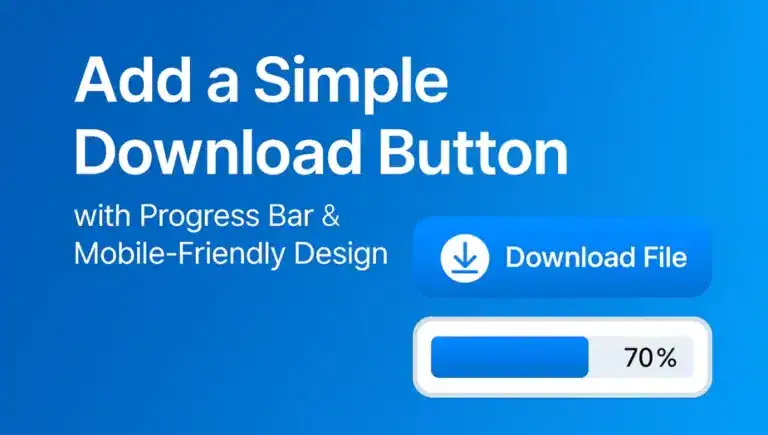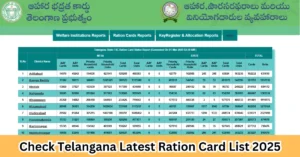Monetizing a blog in 2025 is a strategic game, picking the right ad network can transform a side hustle into serious income. After testing multiple platforms on a WordPress-based tech and lifestyle blog, five ad networks stand out: Google AdSense, Media.net, Ezoic, Mediavine, and PropellerAds. Each serves different bloggers, from beginners to high-traffic pros. This guide breaks down which is the best ad network for bloggers in 2025 and why each network excels, how to apply, and what to verify before signing up, ensuring you maximize revenue without compromising user experience.

Criteria for Choosing an Ad Network in 2025
To find the best ad network, the following factors were evaluated based on real-world testing:
- Revenue Potential (RPM): Higher revenue per thousand impressions (RPM) drives more earnings.
- User Experience: Ads must align with Core Web Vitals and avoid frustrating readers.
- Traffic Requirements: Accessibility for small and large blogs matters.
- Ease of Setup: Integration should be seamless, especially for WordPress users.
- Global Reach: Diverse advertisers are crucial for mixed US, India, and UK traffic.
- Support: Responsive assistance is key when issues arise.
[relatedpost]
Top Ad Networks for Bloggers in 2025
Below are the five ad networks tested, with detailed insights, application steps, and requirements.
1. Google AdSense
Overview: Google AdSense is the entry-level choice for bloggers, serving contextual ads with no traffic minimum. RPMs range from $1–$3 for tech content, and setup is straightforward with a WordPress plugin like Site Kit. Payouts occur monthly via bank transfer once you reach $100.
Main Point – Why It’s Best: AdSense is the easiest way to start monetizing, requiring no traffic threshold and offering quick approvals for new blogs with minimal content.
Pros: No traffic minimum, simple setup, reliable payments.
Cons: Low RPMs, generic ads, strict policy enforcement.
How to Apply:
- Visit adsense.google.com and sign up with a Google account.
- Submit your blog URL and connect to Google Analytics for traffic verification.
- Add the AdSense code to your WordPress site using a plugin like Site Kit or by editing
header.php. - Wait 2–14 days for approval. Google evaluates content quality and site compliance.
What to Check Before Applying:
- Content: 10–15 original posts, no plagiarism or thin content.
- Site Setup: Include About, Contact, and Privacy Policy pages. Use a free theme like Astra if needed.
- Traffic: No minimum, but 500+ monthly pageviews helps approval.
- Compliance: Avoid restricted niches (e.g., gambling, adult content).
Key insight:
AdSense is ideal for blogs under 5,000 pageviews/month, generating $10–$30 monthly as a starting point.
2. Media.net
Overview: Media.net, powered by Yahoo and Bing, delivers contextual ads with RPMs of $4–$6 for tech niches. It integrates easily with WordPress via plugins like Ad Inserter, and approvals take 5–7 days. Payouts are Net-30 via PayPal or wire transfer, with a $100 minimum.
Main Point – Why It’s Best: Media.net offers a step-up from AdSense with better RPMs and relevant ads, perfect for blogs with moderate traffic and some US/UK readers.
Pros: Higher earnings than AdSense, contextual ad targeting, no strict traffic minimum.
Cons: US/UK traffic earns most, slow approval process, dated dashboard.
How to Apply:
- Go to media.net and click “Sign Up.”
- Provide your blog URL, email, and traffic details (Google Analytics screenshots recommended).
- Add the ad code to WordPress manually or with a plugin like Ad Inserter.
- Expect approval in 5–7 days. Media.net checks content quality and traffic sources.
What to Check Before Applying:
- Traffic: At least 1,000 monthly pageviews, preferably with US/UK traffic.
- Content: 15+ high-quality posts, no spammy or copied content.
- Design: Mobile-friendly theme with clear navigation.
- Compliance: No copyrighted images or policy violations.
Key insight:
Media.net suits blogs with 2,000–10,000 pageviews/month, earning $50–$150 monthly with optimized placements.
3. Ezoic
Overview: Ezoic leverages AI to optimize ad placements, achieving RPMs of $8–$12. It has no strict traffic minimum (1,000 pageviews recommended) and offers a WordPress plugin for easy setup. Additional tools for SEO and speed are included, but the dashboard is complex. Payouts are Net-30 via PayPal or bank transfer, with a $20 minimum.
Main Point – Why It’s Best: Ezoic’s AI-driven optimization maximizes earnings for small to medium blogs, offering advanced tools without requiring massive traffic.
Pros: High RPMs, accessible entry, SEO and speed features.
Cons: Complex interface, potential site slowdown, frequent marketing emails.
How to Apply:
- Sign up at ezoic.com with your blog URL and email.
- Connect via their WordPress plugin or Cloudflare integration.
- Submit Google Analytics data for traffic verification.
- Approval takes 2–5 days, focusing on content and basic traffic.
What to Check Before Applying:
- Traffic: 1,000+ pageviews/month recommended.
- Content: 10+ original posts, no policy violations.
- Site Speed: Use a lightweight theme (e.g., GeneratePress) to counter Ezoic’s potential speed impact.
- Analytics: Link Google Analytics for faster approval.
Key insight:
Ezoic is great for blogs with 5,000–20,000 pageviews/month, earning $100–$300 monthly with AI-driven tweaks.
4. Mediavine
Overview: Mediavine is a premium network popular among lifestyle bloggers, requiring 50,000 sessions/month. RPMs range from $15–$20, and its WordPress plugin ensures SEO-friendly ad placements. Payouts are Net-65 via PayPal or bank transfer, with no minimum.
Main Point – Why It’s Best: Mediavine delivers top-tier RPMs and reader-friendly ads, ideal for high-traffic blogs aiming for premium earnings.
Pros: High payouts, excellent support, Core Web Vitals compliance.
Cons: 50,000-session requirement, US-centric earnings, long payout wait.
How to Apply:
- Apply at mediavine.com with your blog URL.
- Grant Google Analytics access to verify 50,000+ sessions in the last 30 days.
- Install their WordPress plugin after approval (7–14 days).
- Mediavine assesses content, niche, and traffic quality.
What to Check Before Applying:
- Traffic: 50,000+ sessions/month (roughly 60,000 pageviews).
- Content: 25+ long-form, original posts in a clear niche.
- Niche: Lifestyle niches (food, travel) perform best, but others qualify.
- Compliance: Clean Analytics data, no policy violations.
Key insight:
Mediavine shines for blogs with 60,000+ pageviews/month, earning $800–$1,200 monthly in lifestyle niches.
5. PropellerAds
Overview: PropellerAds offers pop-unders, push notifications, and banners with no traffic minimum. RPMs are $2–$4, and setup is quick via WordPress plugins like Insert Headers and Footers. Payouts are Net-30 via PayPal or Payoneer, with a $5 minimum.
Main Point – Why It’s Best: PropellerAds is the fastest way to monetize micro-blogs, requiring no traffic and offering instant approvals.
Pros: No traffic minimum, rapid setup, low payout threshold.
Cons: Intrusive ads, low RPMs, high bounce rate risk.
How to Apply:
- Sign up at propellerads.com with your blog URL and email.
- Add their ad code to WordPress manually or via a plugin.
- Approval takes 1–3 days, checking for a live site with basic content.
What to Check Before Applying:
- Content: 5–10 posts, even with minimal traffic.
- Site: Functional blog, no under-construction pages.
- User Experience: Monitor bounce rate with pop-unders using Google Analytics.
- Analytics: Optional but useful for tracking ad performance.
Key insight:
PropellerAds works for blogs under 1,000 pageviews/month, earning $10–$50 monthly, but prioritize user experience.
Which Ad Network Should You Choose?
Here’s a quick guide based on your blog’s traffic and goals:
- Beginners (<5,000 pageviews/month): Start with Google AdSense or PropellerAds for easy approvals.
- Small Blogs (5,000–20,000 pageviews/month): Media.net or Ezoic offer better RPMs and accessible entry.
- High-Traffic Blogs (50,000+ sessions/month): Mediavine delivers premium earnings for established sites.
Mediavine stands out for high-traffic blogs due to its $15–$20 RPMs and seamless ad integration, but Ezoic’s AI optimization makes it a strong choice for smaller blogs aiming to scale.
Pro Tip:
PropellerAds works for blogs under 1,000 pageviews/month, earning $10–$50 monthly, but prio Before applying to any network, ensure your WordPress site has a Privacy Policy (use Termly for a free template), a mobile-friendly theme, and 10–25 original posts. Track traffic with Google Analytics for accurate submissions.ritize user experience.
How to Set Up an Ad Network on WordPress
Most networks follow a similar setup process for WordPress:
- Apply: Submit your blog URL and Analytics data to the network’s website.
- Add Code: Post-approval, use a WordPress plugin (e.g., Site Kit for AdSense, Ad Inserter for Media.net) or add code to
header.php. Example for Media.net:
- Optimize Placements: Use network dashboards to select ad types (banners, in-article). Avoid overloading with video ads to maintain site speed.
- Monitor Earnings: Check real-time RPMs and impressions. Most networks pay Net-30 or Net-65.
Comparison of Top Ad Networks for Bloggers
The table below summarizes key features of the five ad networks, making it easier to compare and find out which is best ad network for your blog.
[table id=1 /]Tips to Boost Ad Revenue in 2025
Testing revealed these strategies to maximize earnings across networks:
- Improve Site Speed: Use WP Rocket to keep load times under 1.5s, tested with Google PageSpeed Insights, for more ad impressions.
- Create Long-Form Content: Posts over 1,500 words increase time-on-site, serving more ads.
- Optimize SEO: Target keywords like “best ad network for bloggers 2025” with Rank Math and link to related posts like SEO plugins.
- Test Ad Placements: Balance in-article and sidebar ads to avoid clutter, using network analytics.
- Diversify Income: Pair ads with affiliate programs like Amazon Associates for stable revenue.
[relatedpost]
Final Thoughts
Selecting the best ad network for bloggers in 2025 hinges on your blog’s traffic, niche, and monetization goals. Google AdSense and PropellerAds are beginner-friendly with no traffic barriers, Media.net and Ezoic cater to growing blogs with solid RPMs, and Mediavine rewards high-traffic sites with premium payouts. The comparison table and application guides above simplify your decision. Start with a network that matches your current traffic, optimize your setup, and scale to higher-tier networks as your blog grows.
Which ad network are you leaning toward? Drop your questions or plans in the comments, and let’s discuss! Apply to your chosen network today to kickstart your blog’s revenue.
Also Read : 6 Best Free WordPress Security Plugins for 2025
Which ad network pays the most for bloggers in 2025?
Mediavine offers the highest RPMs ($15–$20) for blogs with 50,000+ sessions/month, especially in lifestyle niches like food or travel. Ezoic follows with $8–$12 RPMs for smaller blogs, while AdSense and PropellerAds pay the least ($1–$4).
Can I use multiple ad networks on my blog?
Yes, but it’s tricky. Combining networks like AdSense and Media.net is possible, but avoid overloading your site with ads, as it can hurt user experience and Core Web Vitals. Use a plugin like Ad Inserter to manage placements and monitor performance with Google Analytics.
How long does it take to get approved by ad networks?
Approval times vary: PropellerAds (1–3 days), Ezoic (2–5 days), Media.net (5–7 days), AdSense (2–14 days), and Mediavine (7–14 days). Ensure your site meets content and traffic requirements to avoid delays.
Do ad networks affect my blog’s SEO?
Poorly optimized ads (e.g., PropellerAds’ pop-unders) can increase bounce rates and hurt SEO. Networks like Mediavine and Ezoic prioritize Core Web Vitals, minimizing SEO impact. Use WP Rocket and lightweight themes to maintain speed.
What’s the minimum traffic needed to monetize a blog?
AdSense and PropellerAds require no minimum traffic, Media.net and Ezoic suggest 1,000+ pageviews/month, and Mediavine demands 50,000 sessions/month. Start with AdSense for low traffic and scale to premium networks as you grow.
How can I increase my ad revenue without adding more ads?
Focus on SEO to drive traffic, write long-form content (1,500+ words), and optimize ad placements using network analytics. Tools like Rank Math and internal linking to posts like SEO plugins boost organic visits, increasing impressions.







